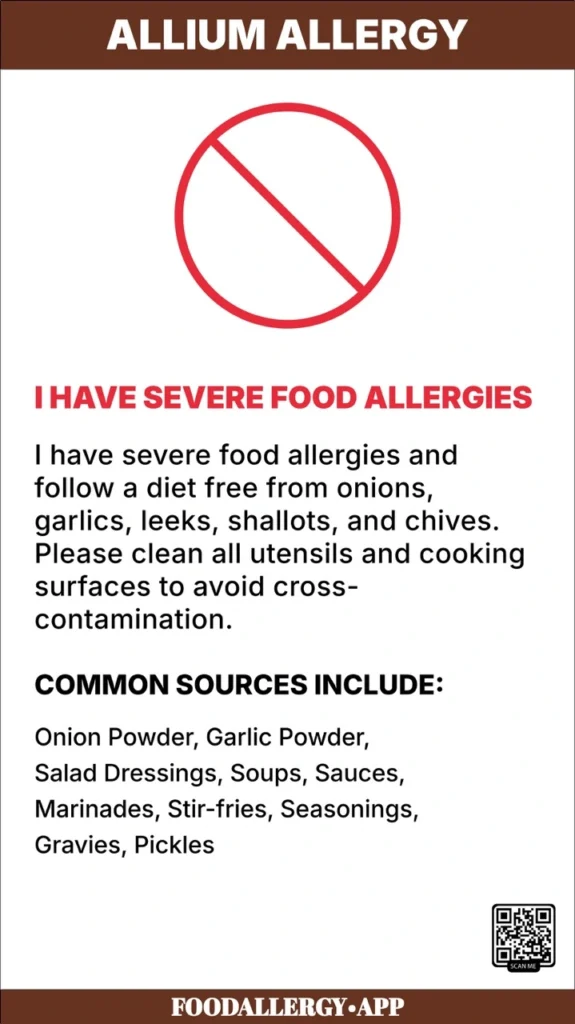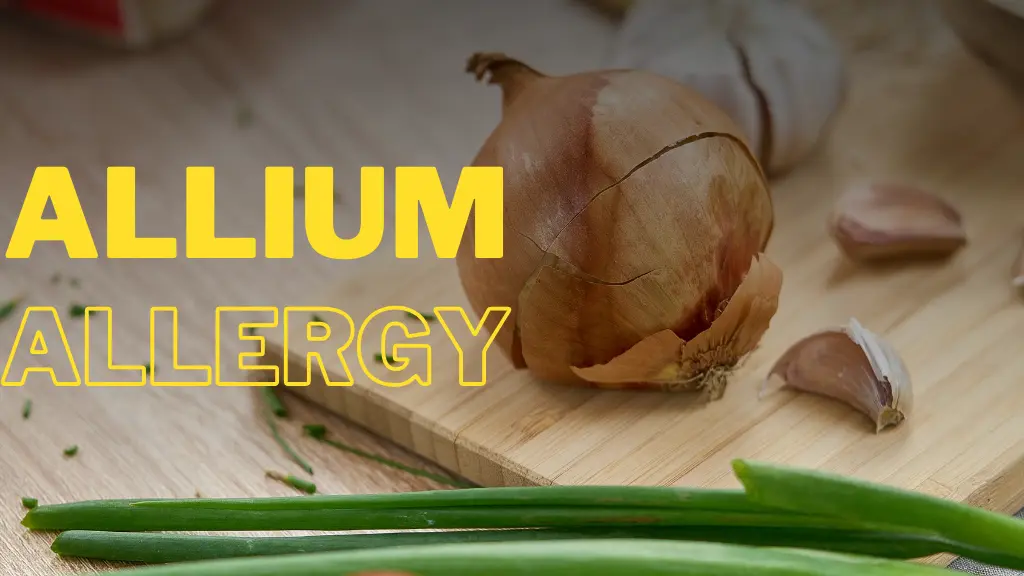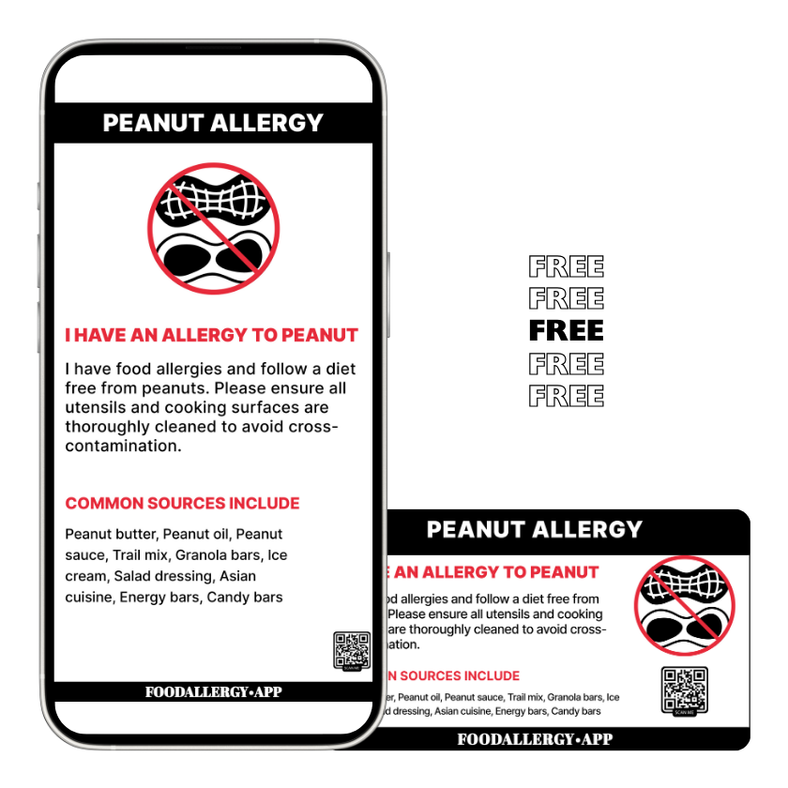Allium Allergy: A Comprehensive Guide
Allium allergy, particularly related to garlic (Allium sativum) and onion (Allium cepa), is a relatively rare but significant health concern. It can manifest through a range of symptoms, including allergic contact dermatitis, food allergies, and respiratory issues. Allium species, which include garlic, onions, leeks, shallots, and chives, are commonly used in cooking worldwide, making avoidance challenging for those with allergies. This guide explores the causes, symptoms, diagnosis, and management strategies for individuals affected by Allium allergies, with a focus on garlic and onions.
What is Allium Allergy?
Allium allergy is a hypersensitivity to plants within the Allium genus. These allergies are often IgE-mediated, meaning they are driven by the immune system’s production of immunoglobulin E (IgE) antibodies in response to allergenic proteins found in these plants. Proteins such as alliin lyase in garlic have been identified as key triggers of allergic reactions (Kao et al., 2004).
Prevalence and Underdiagnosis
Though true Allium allergies are uncommon, they can significantly impact individuals’ quality of life due to the ubiquitous use of garlic and onions in cooking. The exact prevalence of this allergy is not well-documented, and many cases go unreported, often confused with food intolerances or gastrointestinal disorders such as irritable bowel syndrome (IBS). For those with confirmed allergies, even trace amounts of cooked Allium vegetables can trigger severe reactions.
Symptoms of Allium Allergy
Allium allergies can cause a range of symptoms, from mild discomfort to severe reactions, depending on the individual’s sensitivity. Common symptoms include:
- Skin reactions: Hives or allergic contact dermatitis, particularly after handling raw garlic or onion (Hall et al., 2021).
- Respiratory symptoms: Wheezing, coughing, and even occupational asthma, especially in environments where garlic or onion dust is inhaled (Walt et al., 2010).
- Gastrointestinal distress: Nausea, vomiting, diarrhea, and stomach pain.
- Severe reactions: In rare cases, anaphylaxis has been reported, particularly in infants (Nacaroğlu et al., 2020).
It is crucial to differentiate between allergic reactions and food intolerances, as the latter may cause similar gastrointestinal symptoms without involving the immune system.
Diagnosis and Testing
Diagnosis of Allium allergies typically involves a combination of clinical history, allergy testing (skin prick tests or specific IgE blood tests), and, in some cases, food challenges under medical supervision. An elimination diet, where allium foods are removed from the diet and reintroduced in controlled amounts, may help clarify whether symptoms are due to an allergy or intolerance.
Cross-Reactivity and Related Allergies
Allium allergies may involve cross-reactivity with other plants in the Liliaceae family, such as asparagus or lilies. Individuals with oral allergy syndrome may also experience reactions to Allium species due to shared protein structures with pollen allergens (Egger et al., 2006).
Management and Treatment
Currently, there is no cure for Allium allergies, and management focuses primarily on avoidance of Allium-containing foods. Key strategies include:
- Antihistamines: For mild allergic reactions like hives or itching.
- Epinephrine auto-injectors: Essential for individuals at risk of anaphylaxis.
- Corticosteroids: Used to manage more severe reactions and prevent escalation.
Foods and Hidden Sources to Avoid
Alliums are prevalent in various foods and culinary settings, so vigilance is necessary. Common sources of garlic and onion include:
- Fresh or cooked garlic and onions, leeks, shallots, and chives.
- Processed foods such as soups, sauces, and salad dressings that may contain garlic or onion powder.
- Restaurant dishes, particularly in ethnic cuisines like Italian, Indian, and Chinese, which frequently use garlic and onions.
It’s also important to check ingredient labels for “natural flavors” that may contain Allium derivatives.
Dining Out and Traveling with an Allium Allergy

Dining out can be particularly challenging for individuals with Allium allergies. It’s vital to inform restaurant staff about your allergy and ensure that dishes are prepared without garlic or onions. For international travel, carrying translated allergy cards can be extremely helpful. These cards can clearly state the allergy in the local language, helping prevent accidental exposure.
For example:
- French: “Je suis allergique à l’ail et aux oignons.”
- Spanish: “Soy alérgico(a) al ajo y las cebollas.”
- German: “Ich bin allergisch gegen Knoblauch und Zwiebeln.”
Carrying safe snacks and researching local cuisines ahead of time can also reduce the risk of exposure.
Conclusion
While Allium allergies are rare, they can significantly affect daily life due to the widespread use of garlic and onions in cooking. Proper diagnosis and management are key to preventing severe reactions. Individuals with Allium allergies should work closely with healthcare providers to develop an allergy management plan, which may include carrying an epinephrine auto-injector, avoiding high-risk foods, and clearly communicating dietary restrictions when dining out or traveling. With the right precautions, individuals with Allium allergies can manage their condition effectively and safely.
FAQs
Common Questions About Allium Allergy
Can you be allergic to one type of onion but not others?
Yes, it’s possible. While many people with an onion allergy may react to all varieties, some individuals may only be allergic to certain types of onions due to differences in proteins that trigger allergic reactions.
Can you eat garlic if you are allergic to onions?
In most cases, no. Garlic and onions both belong to the Allium family, and individuals who are allergic to onions often have similar reactions to garlic, as they share similar allergenic proteins.
What foods are in the Allium family?
The Allium family includes garlic, onions (yellow, red, and white), leeks, shallots, chives, and scallions.
Can someone be allergic to the smell of onions or garlic?
Yes, though it is rare. Some individuals may experience allergic reactions or irritation, especially in enclosed spaces where airborne particles from garlic or onion are present.
Is there a cure for Allium allergies or intolerances?
There is no cure for Allium allergies or intolerances. The primary management approach is strict avoidance of trigger foods and careful monitoring of symptoms.
Is cauliflower part of the Allium family?
No, cauliflower is not part of the Allium family. It belongs to the Brassicaceae family, which includes vegetables like broccoli and cabbage.
Is garlic allergy considered a type of Allium allergy?
Yes, garlic allergy falls under the category of Allium allergies, as garlic is part of the Allium genus.
Is onion allergy considered an Allium allergy?
Yes, onion allergy is also categorized under Allium allergies since onions are a member of the Allium family.
References
- Egger, M., Mutschlechner, S., Wopfner, N., Gadermaier, G., Briza, P., & Ferreira, F. (2006). Pollen‐food syndromes associated with weed pollinosis: an update from the molecular point of view. Allergy, 61(4), 461-476. https://doi.org/10.1111/j.1398-9995.2006.00994.x
- Hall, E., Portera, M., & Patel, T. (2021). Herbalism in wound care: a case of garlic burn. Jaad Case Reports, 9, 100-101. https://doi.org/10.1016/j.jdcr.2021.01.013
- Kao, S., Hsu, C., Su, S., Hor, W., T, W., & Chow, L. (2004). Identification and immunologic characterization of an allergen, alliin lyase, from garlic (Allium sativum). Journal of Allergy and Clinical Immunology, 113(1), 161-168. https://doi.org/10.1016/j.jaci.2003.10.040
- Nacaroğlu, H., Ayman, F., & Çelebi, M. (2020). Garlic allergy: a rare cause of anaphylaxis in infants. Asthma Allergy Immunology, 18(2), 102-104. https://doi.org/10.21911/aai.507
- Walt, A., Lopata, A., Nieuwenhuizen, N., & Jeebhay, M. (2010). Work-related allergy and asthma in spice mill workers – the impact of processing dried spices on IgE reactivity patterns. International Archives of Allergy and Immunology, 152(3), 271-278. https://doi.org/10.1159/000283038






